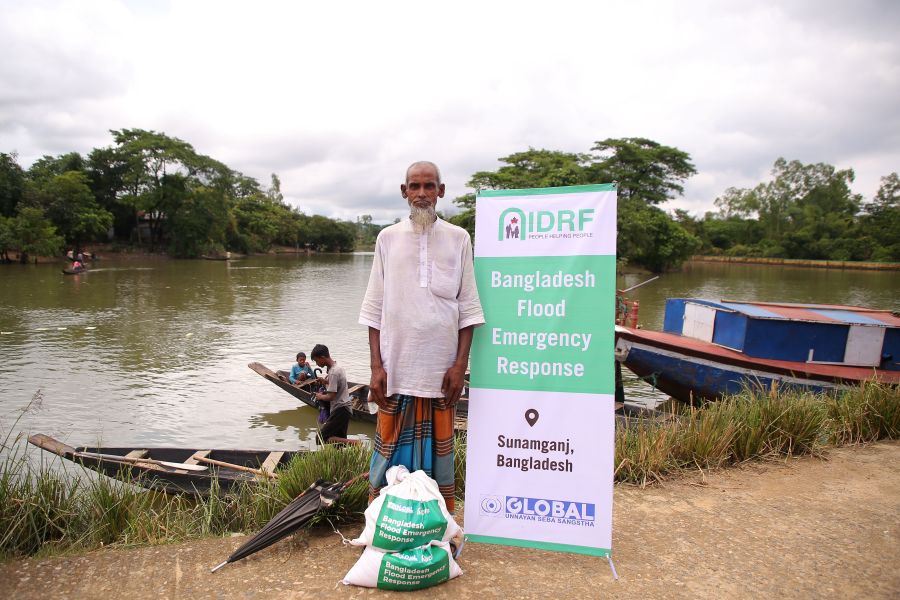
Case Study - IDRF - Flood Response 2022 - Chhabul Mia

Purpose of Case Studies |
Case studies are an excellent tool used in the monitoring and evaluation of a project. IDRF requires a minimum of two case study submissions per reporting period to highlight some of the unique experiences and stories of IDRF’s project beneficiaries. A case study is more than a simple reiteration of the services a beneficiary received under a specific project. A case study should tell a unique story of a beneficiary and should demonstrate the effectiveness and impact of a project in addressing specific challenges outlined in the project agreement. A case study should explain the short and long-term benefits a beneficiary received as a participant of an IDRF project. Overall, case studies involve looking at one experience in-depth and showing how this experience relates to the broader picture.
When structured, developed, and written correctly, a case study should engage the reader by clearly describing the situational context and the challenge(s) faced by a particular beneficiary. It highlights the importance of the current project and why there is a need for such programming. When shared through social media, case studies are extremely useful in raising awareness about specific global issues and encourage the reader to act and learn more about a project.
Developing Case Studies |
There are many ways to develop and structure a case study. For this project, a case study should be framed as a story having three main components: (1) a main character; in this case, the main character would be a project beneficiary, (2) a problem; this should include a description of the challenge(s) experienced by that beneficiary, and lastly (3) a solution; the solution should be a description of how that beneficiary’s participation in this project improved or mitigated the identified challenges.
Case Study Framework |
As previously stated, the purpose of a case study is to inform, engage and mobilize the reader to take action, learn more and remain engaged in the project and the work of the organizations involved. The purpose of this document is to provide a framework for all case study submissions ensuring consistency and compliance with IDRF reporting requirements.
Please note: Case study submissions are required at all scheduled reporting periods outlined on the payment and reporting schedule of the project agreement. Each case study should be accompanied by a minimum of two high-resolution, full-length JPEG photo attachments. Please DO NOT copy and paste pictures into this template as this affects the quality of the photos. Please complete the following framework by providing a minimum of two case studies per reporting period.
CASE STUDY 1 | |
Project Title | Emergency Family Pack for Flood Victim in Bangladesh |
Country | Bangladesh |
Region(s) | Sylhet Division, Sunamganj District, Chhatak Upazila |
Sector | Food Security and Nutrition |
Project Beneficiary | Indicate the [name] and [age] of the beneficiary featured in this case study. Md. Chabul Mia (Male), age 62 years |
Challenges experienced by beneficiary | Describe the unique challenges faced by the beneficiary specific to the project sector. [Please include this information in point form]
|
Project impact | Describe the how this project improved or mitigated the challenges identified by the beneficiary. Please describe the short-term and long-term benefits of this project. [Please include this information in point form]
|
Completed Case Study (minimum of 2 paragraphs) | Insert the completed full-length case study.
Md. Chabul Mia, son of Fazal Ahmed, lives in the Moddho Ganeshpur viliage of Islampur Union, Chhatak, Sunamganj. 62 years old Chabul Mia works as a day laborer where he has to unload tons of rocks and sand every day. Chabul’s family consists of his wife and two sons. His eldest son is now studying in class 9 and the youngest one is in class 7. Between the cost of his sons’ study and family expenses, Chabul Mia was having difficulties to keep his family afloat. But his dream of giving proper education to his sons dissipated all these money issues until one night of June changed everything. The growing flood in the areas of Sunamganj destroyed everything Chabul Mia had. Along with the only support- his home, he lost his livelihood. The shelter home for the affected became his new living place. Although Chabul Mia barely managed with the relief goods from the shelter, it stopped coming after first 20 days. Now his family has to live in starvation most of the days. On top of this, he is having a hard time putting up a solid roof over their head. In times of these sufferings, the news of distributing food relief from Global Unnayan Seba Sangstha came to him as a ray of hope. After receiving the large amount of food relief from GUSS and the funding partner IDRF, Chabul Mia expressed his happiness through his heartfelt prayer for IDRF and GUSS. |
Beneficiary Quotation #1 | Include a direct quotation from the beneficiary describing the unique challenges experienced by the beneficiary.
“The relief has come after three days of starvation. There are so many like me is facing the same. I can’t explain how much I am lucky”. |
Beneficiary Quotation #2 | Include a direct quotation from the beneficiary describing the positive impact of the project in relation to the challenges described above.
“Allah SWT will sure help IDRF & GUSS as they helped us” |
Media | Provide a brief description of the case study pictures provided. Please ensure each case study is accompanied by a minimum of two pictures featuring the beneficiary participating in the project activities. The pictures were taken during distribution. Pictures are attached as Annex-6 |


